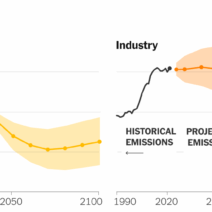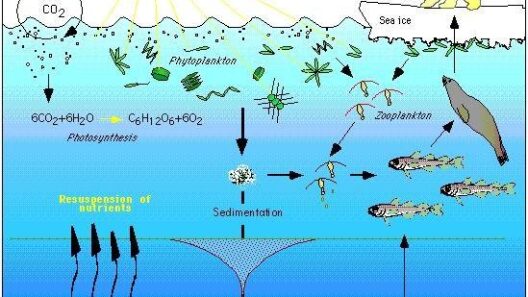In contemporary discourse on environmental perturbations, the intersection of climate change and seismic activity has emerged as a nuanced and compelling subject. The prevailing conception of earthquakes as merely geological phenomena frequently overshadows the complexities of their interrelations with climate dynamics. However, burgeoning research suggests that shifts in climate may exert a significant influence on the lithospheric responses, thereby illuminating a rather surprising connection between climate change and earthquakes.
Earthquakes primarily arise from the movement of tectonic plates, which are colossal slabs of the Earth’s crust floating atop the viscous mantle beneath. These movements generate intense pressure along fault lines, culminating in sudden energy releases that manifest as seismic waves. Yet, as the climate evolves due to anthropogenic influences, the resultant alterations in mass and stress distributions upon the Earth’s surface could feasibly impact tectonic activity. This intersection of disciplines—climatology and seismology—often raises more questions than it answers, creating an intricate tapestry of connections worthy of examination.
One of the salient observations supporting the correlation between climate change and seismic occurrences pertains to glacial isostatic adjustment. As glaciers and ice sheets retreat in response to rising global temperatures, the subsequent reduction in weight can alleviate pressure on the underlying crust. This unloading phenomenon may lead to fault slippage and potentially trigger earthquakes. For instance, scientific inquiries into regions recently liberated from heavy glacial cover, such as those in Scandinavia and Canada, indicate a notable uptick in seismic events coinciding with deglaciation periods.
Furthermore, the hydrosphere’s role in contributing to earthquake activity cannot be overlooked. The alteration in water reservoirs—whether through the accumulation of rainfall, the construction of large reservoirs, or alterations in groundwater levels—can induce dynamic stress changes on existing faults. The phenomenon of induced seismicity has been documented extensively, particularly in areas where significant water impoundment has occurred. The stress shifts from these water bodies invariably lead to complex interactions with fault lines, engendering seismic events with potential magnitudes that can be substantial.
Another layer of complexity is added to this equation by the phenomenon of drought. Ironically, while water accumulation can precipitate seismic activity, its absence might cause just as profound effects. Prolonged periods of drought can result in the shrinkage of hydrological basins, leading to the compaction of the Earth’s crust. As stress accumulates from the drying out of lakes and riverbeds, the resultant effects can create conditions ripe for earthquakes. This paradox exemplifies the intricate balance of environmental systems and their unforeseen consequences.
Moreover, anthropogenic climate change manifests through increased variability in weather patterns, exemplified by the intensification of extreme weather events. These fluctuations can exacerbate geological instability by contributing to soil erosion and land subsidence, factors that can indirectly influence earthquake preparedness and frequency. Areas previously thought to be geologically stable may suddenly find themselves in precarious conditions due to climate-induced variances that alter stress distributions beneath the surface.
The potential linkage between climate change and seismicity extends beyond mere observation; it ventures into the realms of global policy and community preparedness. In countries grappling with the dual threats of environmental degradation and seismic risks, a comprehensive understanding of how changing climate patterns interplay with geological stability is vital. Policymakers must embrace an integrative approach that considers environmental, geological, and social components to mitigate risks and adapt to the evolving landscape of natural disasters.
Equally important is the role of public awareness and education in addressing these issues. As communities become more cognizant of the potential impacts of climate change on geological stability, the impetus for further research into adaptive policies and responsive infrastructure grows. Understanding the multifaceted relationship between climate dynamics and seismic phenomena encourages a more engaged citizenry, fostering dialogue and action at the local and global levels.
Nevertheless, despite these compelling interconnections, it is critical to emphasize that earthquakes remain predominantly geological in nature. While climate change can influence the frequency and intensity of seismic events through indirect mechanisms, the primary drivers of tectonic activity—namely, plate movements—continue to govern the overarching processes. Thus, any assertions regarding climate-induced earthquakes must be articulated with caution to avoid conflating correlation with causation.
As scientific exploration continues to unravel the complexities of Earth’s systems, the revelations surrounding climate change’s potential to influence seismic activity serve to enrich our understanding of planetary interdependencies. This dialogue offers fertile ground for further inquiry while underscoring the importance of preserving the balance within our natural systems. The marriage of climatology and seismology presents a multifaceted narrative, prompting a reconsideration of existing paradigms that govern our understanding of both environmental and geological sciences.
In conclusion, while the connection between climate change and earthquakes may not be immediately apparent, a thoughtful exploration reveals a tapestry of interactions that merit consideration. As the climate continues to evolve, the possibility of unexpected geophysical consequences underscores the urgent need for integrated research and policy initiatives. Only through a holistic approach can society adequately prepare for and mitigate the impacts of both climate change and seismic risks—an endeavor crucial for the resilience of communities worldwide.






